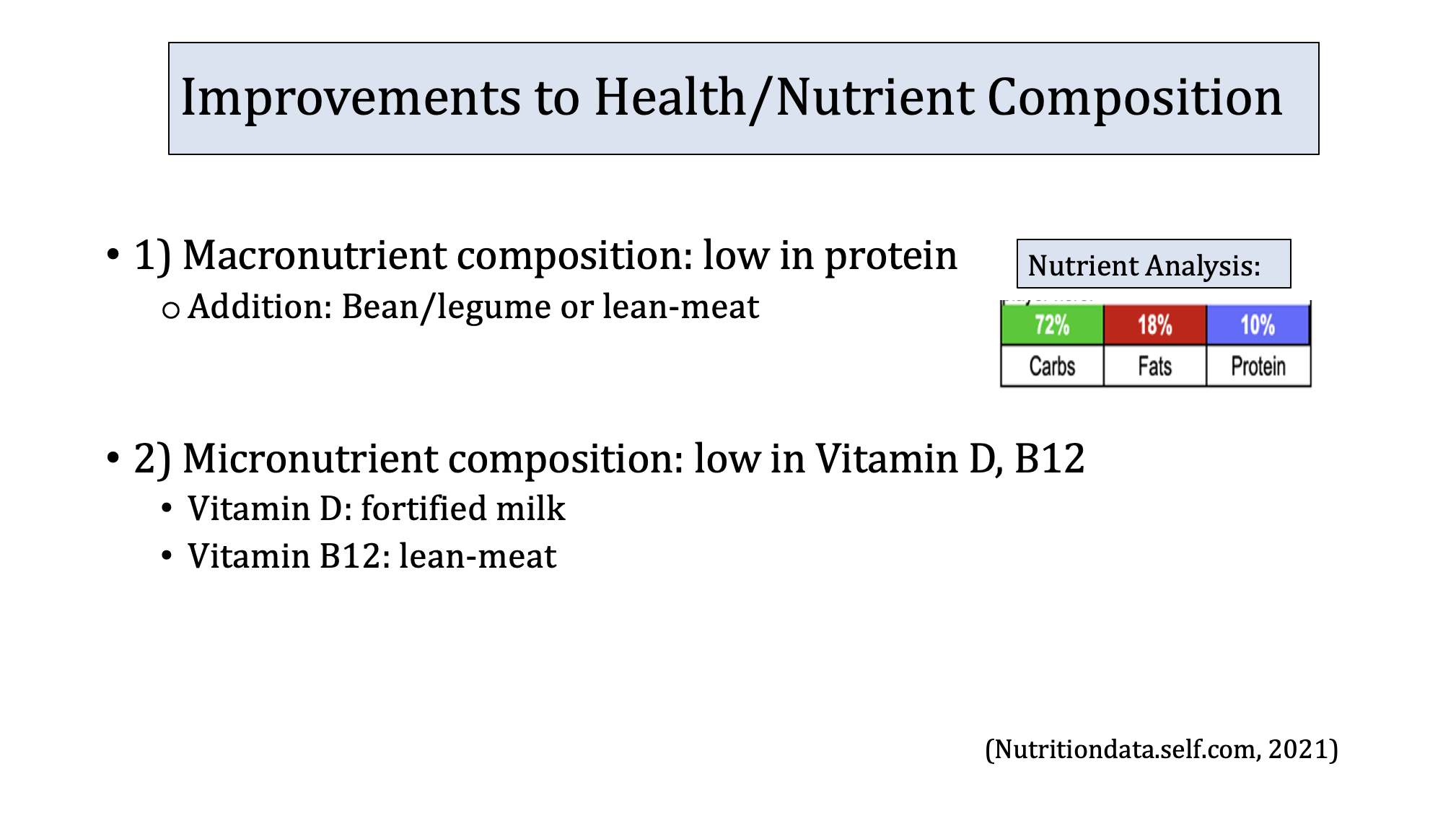Recipe for Older Adults
In my Ethnic and Therapeutic Meal Patterns Course, we cooked themed meals focusing on a different population each week —this week was older adults. For some time, I have been following two neurologists on social media, the Sherzais, and they have devoted their life’s work towards scientific research in the prevention and care of cognitive decline and neurogenerative disease through lifestyle, with an emphasis on Alzheimer Disease which is near and dear to their heart. In the Spring of 2021, they came out with The 30-day Alzheimer’s Solution cookbook and I was so excited to cook one of their recipes. They put a lot of intention into the ingredients that they choose for their recipes and they are backed by their research.
So with keeping in mind older adults’ nutritional needs and cooking techniques, I chose this chickpea and barley soup. Presentation included below:








The main ingredients in this dish are ones that the Sherzais themselves have highlighted to be particularly ‘brain nourishing:’ These ingredients collectively contain fiber, B-vitamins, and antioxidants, including Vitamin E and C. The herbs in particular I wanted to point out because they are often underrated; they are actually very potent anti-inflammatory, antioxidant compounds that can reduce oxidative damage in the brain.
I was interested in this recipe because we know that with increasing age comes increased risk of cognitive decline and developing neurogenerative disease and that leads to consequences like loss of taste and smell, difficulty swallowing, poor balance and coordination leading to reduced mobility, and overall reduced quality of life and increased poorer mental health.
I also had kept in mind older individuals’ sensational, and functional challenges. Soups encourage careful chewing and swallowing, a challenge to many older adults. To maximize olfaction, the recipe included a variety of scents, especially coming from the chives, dill, and lemon. For visual appeal, I put the dill and chives on top. I also made the presentation simple, by serving the soup in a solid colored bowl. I also tried combining different tastes: while soup is familiar, there were some different elements that can expand their palate a bit. Then there is a contrast of textures, sizes and shapes. And finally, the soup was served warm which is pleasing to the aging palate.
Sources:
Boyce, J. M., & Shone, G. R. (2006). Effects of ageing on smell and taste. Postgraduate medical journal, 82(966), 239–241. https://doi.org/10.1136/pgmj.2005.039453
Fernández-López, J., Botella-Martínez, C., Navarro-Rodríguez de Vera, C., Sayas-Barberá, M.E., Viuda-Martos, M., Sánchez-Zapata, E., & Pérez-Álvarez, J. A. (2020). Vegetable Soups and Creams: Raw Materials, Processing, Health Benefits, and Innovation Trends. Plants (Basel, Switzerland), 9(12), 1769. https://doi.org/10.3390/plants9121769
Institute of Medicine (US) Food Forum. (2010). Providing Healthy and Safe Foods As We Age: Workshop Summary. National Academies Press (US).
Marcus, J. B. (2014). Aging tastes at odds with 'printable' foods. Elsevier Connect. https://owl.purdue.edu/owl/research_and_citation/apa_style/apa_formatting_and_style_g uide/reference_list_electronic_sources.html
National Institutes of Health Office of Dietary Supplements. 2021. Omega-3 Fatty Acids Available from: https://ods.od.nih.gov/factsheets/Omega3FattyAcids-HealthProfessional/
Sherzai, D & Sherzai, A. (2021). The 30-Day Alzheimer’s Solution: The definitive food and lifestyle guide to preventing cognitive decline. HarperCollins Publishers.